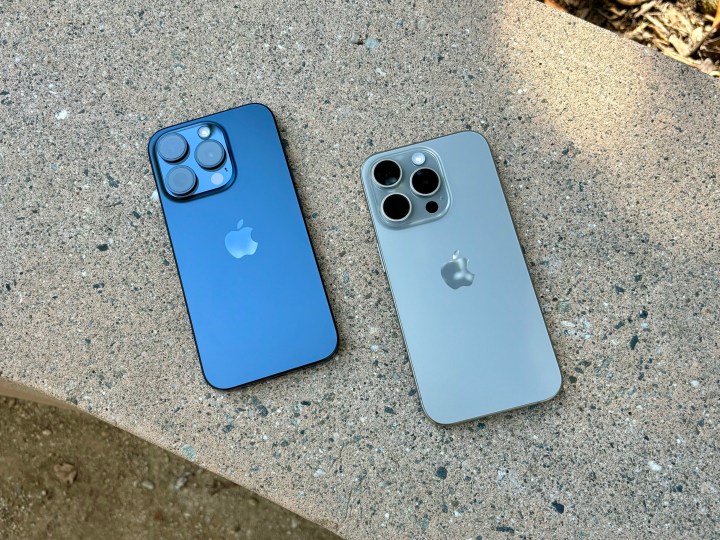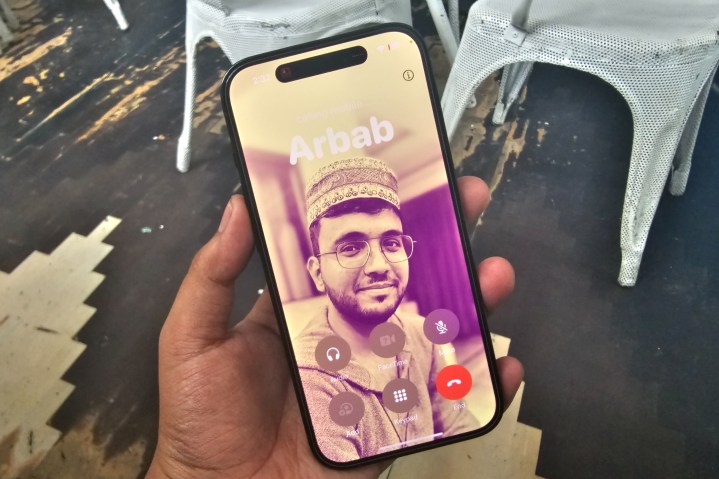
Believe it or not, Apple didn’t always have Siri. Siri originally belonged to SRI International, which created Siri, Inc. in 2007. Then in April 2010, Apple acquired Siri, which became a key component of the iPhone 4S that launched in 2011.
Ever since then, Siri has continued to evolve at Apple, for better or for worse. While the point of Siri is to make your life easier with hands-free use of your iPhone or Apple Watch, it’s far from perfect. Siri often misunderstands you and results in hilarious requests, or is just incapable of doing what you need it to do, sometimes because of a poor connection.
But that may change in the future, as Apple seems to be investing “quite a bit” into generative AI, which is all the rage, according to comments made by Tim Cook during the company’s fourth fiscal quarter earnings call.
Apple is definitely lagging a bit in the current AI race, as Google is in the lead at the moment with the Google Pixel 8 lineup. But Apple already uses AI for some features on iOS, such as the Personal Voice Accessibility tool. Here are a few AI features I would love to see come to the iPhone one day.

Ever since Google debuted the Magic Eraser tool with the Pixel 6 lineup, I’ve been kind of amazed by it. It’s the kind of functionality that I’ve always needed when editing photos. But on my iPhone and iPad, I have to use a third-party app with that function since the built-in editor in the Photos app lacks it.
If Apple is indeed investing in generative AI, then more photo editing tools need to be on the list. I would love to have the ability to simply erase unwanted objects and people from the background of my photos in the native Photos app. This is such a basic editing tool that it’s shocking Apple hasn’t already implemented it.
This year, Google even went a step further with AI photo editing tools and now has the Magic Editor and Best Take features. Magic Editor is like a souped-up version of Magic Eraser, and you can manipulate objects even more, such as moving them around in a different spot in an image. Best Take lets you swap faces from a series of similar photos so you can have the one “perfect” shot.
Though I don’t want to rely too heavily on AI, Apple needs to step up its photo editing game in the native Photos app.
Make automated phone calls tolerable

While I use a smartphone every day, there’s one thing I hate using it for: phone calls. I know; the irony, right?
One of the features that Google made possible on Pixel phones thanks to its Tensor chips are all the AI-powered features when you make actual phone calls. These Pixel Call Assist features include Wait Times, Hold for Me, Direct My Call, Hold for Me, and Call Screen.
Wait Times works on automated calling systems and will give you an estimated time on how long you’ll be on hold based on the average length of calls with that business. There’s even an option to have Google Assistant wait on hold for you while you go about your day and not waste your precious time.
Direct My Call can show the call menu options right on your screen, making it easier to reach the department you need. Call Screen uses AI to ask callers to state their name and reason for calling, and calls can be declined automatically if it’s determined to be spam.
All of these are incredibly useful features, especially if you just don’t like dealing with phone calls in general. I hope if Apple is taking AI seriously, it can consider adding some AI features to make automated calling systems bearable.
An improved Siri

Right now, Siri is the digital assistant on all of Apple’s hardware. However, it’s often easy to poke fun at it because it seems to hardly ever understand or do tasks properly. Personally, the only times I really use Siri are to set timers when cooking.
If Apple is going to take generative AI seriously, then it really needs to look into making Siri much better than what it is currently. One of the biggest pains with Siri is multi-language support. With iOS 17, Apple has made bilingual Siri a thing, but only with English and select Indic languages: Hindi, Telugu, Punjabi, Kannada, and Marathi.
While that works for Indians, that’s still just one group. There are a lot of people who speak English with Spanish, or German, or French, or Italian, or … well, you get the idea. It’s currently frustrating if you don’t use one of the supported Indic languages since Siri will only be able to handle one language at a time. This results in mixed gibberish if it’s reading a message or saying a street name that isn’t in your primary language.
But multiple language support isn’t the only thing that Siri (mostly) fails at. Siri also has a hard time understanding those with speech and voice disorders, such as stuttering. Or it will put your reminder in the wrong list or simply tell you, “I cannot do that,” even though you did that exact thing a day ago.
Siri is a big hit or miss, depending on what you use it for. Compared to the competition, Siri is a bit embarrassing. Hopefully, if Apple is indeed investing in generative AI, then we can cross our fingers for a Siri that can actually do what it’s supposed to do and make our lives easier, not harder.
More intelligent communication and apps

Another useful thing that AI could help out with is communication. In iOS 17, Apple introduced a new keyboard that utilizes a transformer language learning model that learns from what you type in order to improve the accuracy of autocorrect.
The language learning model that Apple is currently using for making improved autocorrect could have even bigger uses. For example, it could help generate or predict message responses based on what you would typically send anyway. It could help improve Siri, too, as we already mentioned. And there’s even the possibility of AI-assisted features in native Apple apps, such as Pages and Keynote, or even auto-generated playlists in Apple Music.
This is just the beginning

Whether you love it or hate it, AI is here to stay, at least for the foreseeable future. Though AI could be potentially abused by bad actors, it also has the potential to be incredibly useful for the average person and make life easier. And when it feels like a lot of smartphone design and features have plateaued for the past few years, AI could be the next exciting thing.
Apple is already behind in the race for AI on mobile, with Google having a clear lead so far. But if Apple is taking the generative AI thing seriously, then there are a lot of fun possibilities in store for the future of iOS as a whole.
Editors’ Recommendations
Services Marketplace – Listings, Bookings & Reviews
